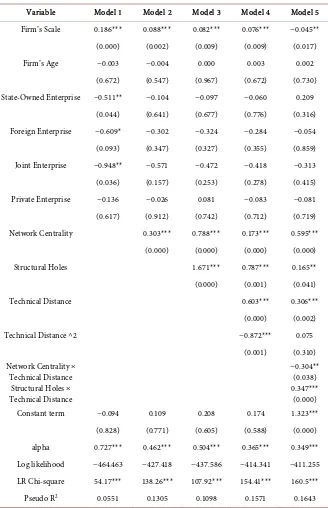Network Position, Technological Distance and Firm’s Cooperation Innovation
Full text
Figure



Related documents
The maximum allowable percent nonconforming for sam- ple estimates of percent nonconforming for the lower, upper, or both specification limits combined, correspon- ding to the
[r]
expanding host range of DMV, testified by the present report and by numerous cases of DMV infection reported in the last 5 years in the Mediterranean Sea ( Mazzariol et al., 2013,
and risk factors for trachoma in Oromia regional state of Ethiopia: results of 79 population-based prevalence surveys conducted with the global trachoma mapping project. Phiri
National Conference on Technical Vocational Education, Training and Skills Development: A Roadmap for Empowerment (Dec. 2008): Ministry of Human Resource Development, Department
Proprietary Schools are referred to as those classified nonpublic, which sell or offer for sale mostly post- secondary instruction which leads to an occupation..
Each June of year t, each rural firm is matched with an urban or small city firm on the basis of industry (Tech, Biotech, and Fama-French, 1997), market value, and having the
The corona radiata consists of one or more layers of follicular cells that surround the zona pellucida, the polar body, and the secondary oocyte.. The corona radiata is dispersed